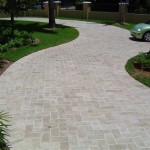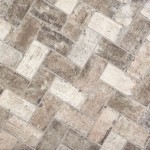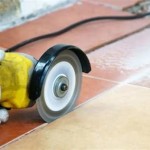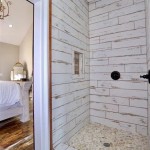Unveiling The Cost Of Installing Tile Floor Per Square Foot
Understanding the cost of installing tile flooring is multifaceted, encompassing various factors that influence the final price per square foot. This article aims to provide a comprehensive overview of these elements, empowering individuals to make informed decisions regarding their tiling projects. From the type of tile chosen to the complexity of the installation, numerous variables contribute to the overall expense.
The per-square-foot cost is a common metric used to estimate the total expense of a tiling project. However, it is crucial to recognize that this figure is an average and can vary significantly based on specific project requirements. Ignoring the nuances of each project can lead to inaccurate budgeting and unexpected costs. Therefore, a thorough understanding of the cost components is essential for effective planning.
Tile Material Costs: The Foundation of the Expense
The type of tile selected directly impacts the overall cost. Tile materials range considerably in price, from inexpensive ceramic tiles to premium natural stone options. Ceramic and porcelain tiles are generally the most affordable, offering a wide range of styles and colors at a budget-friendly price point. Porcelain tiles, while slightly more expensive than ceramic, offer greater durability and water resistance, making them suitable for areas prone to moisture, such as bathrooms and kitchens.
Natural stone tiles, including granite, marble, slate, and travertine, represent a higher price tier. Their natural beauty and unique characteristics contribute to their premium cost. Installation of natural stone tiles often requires specialized skills and techniques, further increasing the overall expense. The cost of natural stone can vary depending on its rarity, origin, and quality.
Glass tiles introduce a modern and elegant aesthetic but are typically more expensive than ceramic or porcelain. Their intricate manufacturing process and unique visual appeal contribute to their higher price point. Similarly, mosaic tiles, comprised of small pieces of various materials, can be costly due to the labor-intensive process of their creation and installation.
Beyond the material itself, the size and shape of the tile also influence the cost. Larger tiles generally require less grout and can reduce labor costs due to faster installation. However, they may be more susceptible to breakage during handling and installation. Intricately shaped tiles, such as hexagons or intricate patterns, often demand specialized cutting and placement, leading to higher labor costs.
Ultimately, selecting the appropriate tile material involves balancing aesthetic preferences with budgetary constraints. Carefully considering the pros and cons of each material, along with their associated costs, is crucial for making an informed decision.
Labor Costs: Expertise and Installation Complexity
Labor costs constitute a significant portion of the total tile installation expense. These costs are influenced by the complexity of the project, the size of the area to be tiled, and the experience and expertise of the installer. Intricate patterns, complex cuts, and challenging layouts require अधिक time and skill, leading to higher labor charges.
Before installation, the subfloor must be properly prepared. This may involve leveling the surface, repairing any damage, and applying a suitable underlayment. Uneven or damaged subfloors can significantly complicate the installation process and increase labor costs. In some cases, extensive subfloor preparation may be required, adding to the overall expense.
The installer's experience and expertise play a crucial role in the quality and efficiency of the installation. Experienced installers possess the knowledge and skills to handle various tiling challenges, ensuring a professional and long-lasting result. While hiring an experienced installer may involve a higher upfront cost, it can ultimately save money in the long run by preventing costly errors and ensuring a durable installation.
Geographic location also influences labor costs. Labor rates vary depending on the region's economic conditions and the local demand for skilled tradespeople. Metropolitan areas typically have higher labor costs compared to rural areas. Obtaining quotes from multiple installers in your area is essential for comparing prices and ensuring a competitive rate.
The scope of the project also impacts labor costs. Installing tile in a small bathroom will generally be less expensive than tiling a large kitchen or an entire floor. The time required to complete the project, the amount of materials needed, and the complexity of the layout all contribute to the overall labor expense.
Additional Costs: Hidden Expenses to Consider
In addition to the tile material and labor costs, several other expenses can contribute to the overall cost of a tile installation project. These additional costs often go unnoticed during initial budgeting, leading to unexpected expenses. Thoroughly accounting for these factors is crucial for accurate cost estimation.
Grout and mortar are essential materials for tile installation and contribute to the overall cost. The type and amount of grout and mortar needed will depend on the type of tile chosen and the size of the project. Specialized grouts, such as epoxy grout, offer enhanced stain resistance and durability but are typically more expensive than standard grout.
Cutting tools, adhesives, sealants, and other installation supplies are also necessary and should be factored into the budget. These supplies may seem insignificant individually, but their cumulative cost can be substantial, particularly for larger projects. Renting or purchasing specialized tools may be necessary depending on the complexity of the project.
Removing existing flooring can add to the overall cost. The difficulty of removing the old flooring and the type of material being removed will influence the price. Some flooring materials, such as asbestos tiles, require specialized removal procedures and disposal, which can significantly increase the expense.
Disposal fees for demolition debris and unused materials should also be considered. Many municipalities charge fees for disposing of construction waste, including old flooring, tile scraps, and packaging materials. These fees can vary depending on the volume of waste and the local regulations.
Doorway transitions and trim pieces are necessary to create a seamless and aesthetically pleasing transition between the tiled area and adjacent flooring materials. These transitions can be made of various materials, such as metal, wood, or vinyl, and their cost will depend on the material and style selected. Additionally, baseboards and other trim pieces may need to be replaced or installed to complete the project.
Finally, consider the cost of moving furniture and appliances. If the area being tiled is furnished, the cost of moving and protecting these items should be factored into the budget. This may involve hiring professional movers or renting storage space if the items cannot be safely moved to another location within the house.
By carefully considering these additional costs, homeowners can develop a more accurate and comprehensive budget for their tile installation project, minimizing the risk of unexpected expenses.
In conclusion, determining the cost of installing tile flooring per square foot requires a nuanced understanding of various factors. From the selection of tile materials to the complexities of labor and the inclusion of often-overlooked additional costs, each element plays a crucial role in shaping the final price. By carefully evaluating these components and obtaining detailed quotes from reputable installers, individuals can make well-informed decisions and ensure a successful and cost-effective tiling project.

How To Install A Floating Tile Floor

Installing Porcelain Tile In The Laundry Room Young House Love

Tiling Over Tiles Pros Cons

How To Install Tile Flooring

Installing Porcelain Tile In The Laundry Room Young House Love

Installing Porcelain Tile In The Laundry Room Young House Love

How To Install A Floating Tile Floor

How To Install Tile Flooring

2024 Laminate Flooring Installation Cost Guide Angi

Installing Porcelain Tile In The Laundry Room Young House Love
Related Posts








